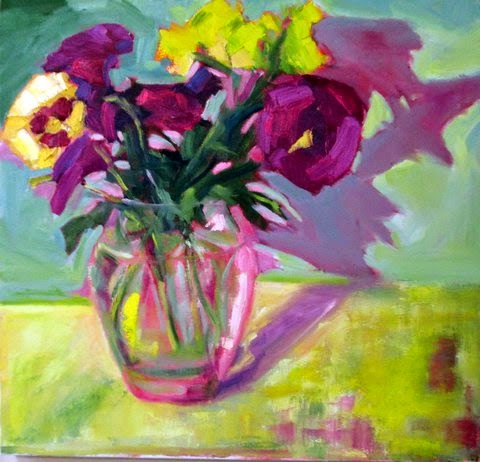Let Your Foreground Do More of the Work-here's why
"We must not imitate the externals of nature with so much fidelity that the picture fails to evoke that wonderful teasing recurrence of emotion that marks the contemplation of a work of art."John F. Carlson
I was talking to some friends pretty new to painting about some work they were making and the subject of foregrounds came up. There is a natural tendency to ignore that part of a painting, using a quick color laid down or not thinking much about the value choice, especially if you are juggling all the other design concerns starting the work and you just want to get that part down that inspired you to begin with. Whether you are a plein air artist or someone working non objectively, it's worth it to step back at the beginning and consider all the options for the whole surface of the painting together. That is the best time to find cohesiveness and originality in the work you are about to do.
| Iconic House 2 • oil on linen • 10" x 12" |
I have painted the yellow house along the harbor in Stonington Maine in the past (along with every other artist to work there I think) and used the view from across the street with the granite chunks in the foreground. Nothing "wrong" with that approach certainly, it makes a simple statement about coastal atmosphere and color.
But this new painting above chooses a much more interesting foreground and allows the viewer to join me in discovering the subject anew as we look down from above through the spruce branches. It's an insistent foreground and acts like a curtain to look through. The spruce branches break up the space around the interior of the painting, even extending off the top of the page, directing the eye here and there. They do a lot of the design work in an unusual way.
So think about the unsung areas that are not your subject, and let them do more of the work!
Here is my Soltek easel tucked into the spruce trees with the painting in progress:



Comments
Post a Comment